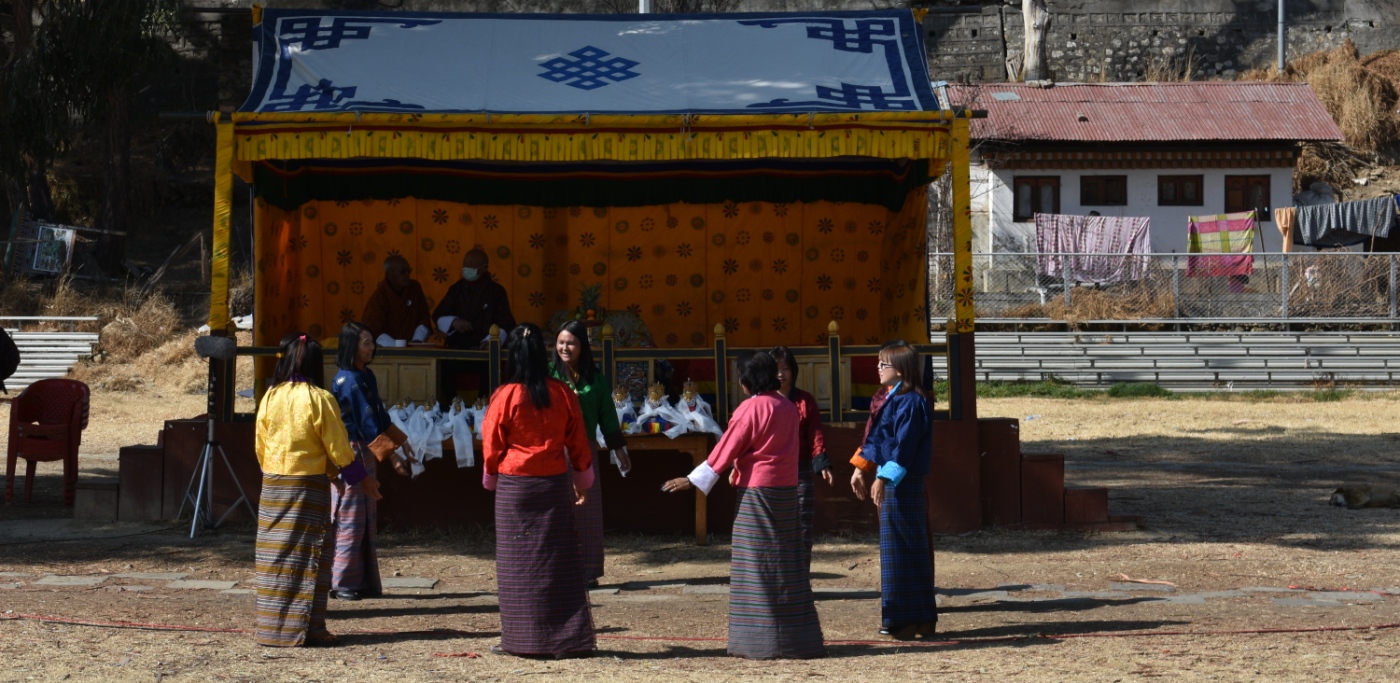Bhutan is a small Buddhist country in the folds of the Himalayas has relied on its geographical isolation to protect itself from outside cultural influences. This country is nestled between Nepal, India, and China.
In an effort to preserve its unique culture and religious traditions, it has adopted a “high value-low volume” philosophy toward tourism. Only in the last decades of the 20th century were foreigners allowed to visit the country, and only then in limited numbers. In this way, Bhutan has successfully preserved many aspects of its culture, which dates directly back to the mid-17th century.
Dzongkha and Sharchop, the principal Bhutanese languages, are closely related to Tibetan, and Bhutanese monks read and write the ancient variant of the Tibetan language, known as chhokey. Both Tibetans and Bhutanese revere the tantric guru, Padmasambhava, the founder of Himalayan Buddhism in the 8th century.
Bhutan citizen has national dress code; men wear a heavy knee-length robe tied with a belt, called a gho, folded in such a way to form a pocket in front of the stomach. Women wear colorful blouses over which they fold and clasp a large rectangular cloth called a kira, thereby creating an ankle-length dress. A short silk jacket or toego may be worn over the kira. Everyday gho and kira are cotton or wool, according to the season, patterned in simple checks and stripes in earth tones. For special occasions and festivals, colorfully patterned silk kira and, more rarely, gho may be worn. Rules of protocol apply when visiting a dzong or a temple, or when appearing before a high-level official.
Men and women work together in the fields, and both may own small shops or businesses. Men take a full part in household management, often cook, and are traditionally the makers and repairers of clothing (but do not weave the fabric).

Marriages are at the will of either party and the marriage ceremony consists of an exchange of white scarves and the sharing of a cup.
Bhutan’s colorful festivals definitely will leave a big impression on all Tshechus were established during the 17th century and have a religious background. Sword dances and other religious rites are performed by monks or village elders, wearing the most astonishing bright and symbolical costumes and masks. Each dance has its own spiritual importance and is meant to teach the visitors about the Buddhist teachings (Dharma), freeing them from evil.

The National game of Bhutan is archery. Each village has its’ own archery range and every festival knows a high-spirited competition. Archery tournaments happen throughout the year on local, inter-village and national level. Teams of archers use bamboo bows, shooting at wooden targets only 30 centimeters in diameter from a distance of 140 meters. The wooden targets are embellished with bright colorful patterns. Although the major role is reserved for the archers, their supporters are maybe just as important, encouraging them strongly and trying to off the opposition with a lot of noise, supported by the Ara (alcohol) which flows from dusk until dawn, keeping the spirits high. If you get the chance to visit an archery tournament, let yourself be immersed in a great excitement, initiation ceremonies, wild dances, singing, jeering and near-primitive howls.
Bhutan might globally be a small country, yet it holds a very strong identity and unity. The rich cultural heritage is strongly promoted by its government. Although modernization is slowly making its way, generating urban settlements and introducing computers, mobile phones and other Western modernity’s, most of Bhutan’s people still live quietly in small remote villages.
